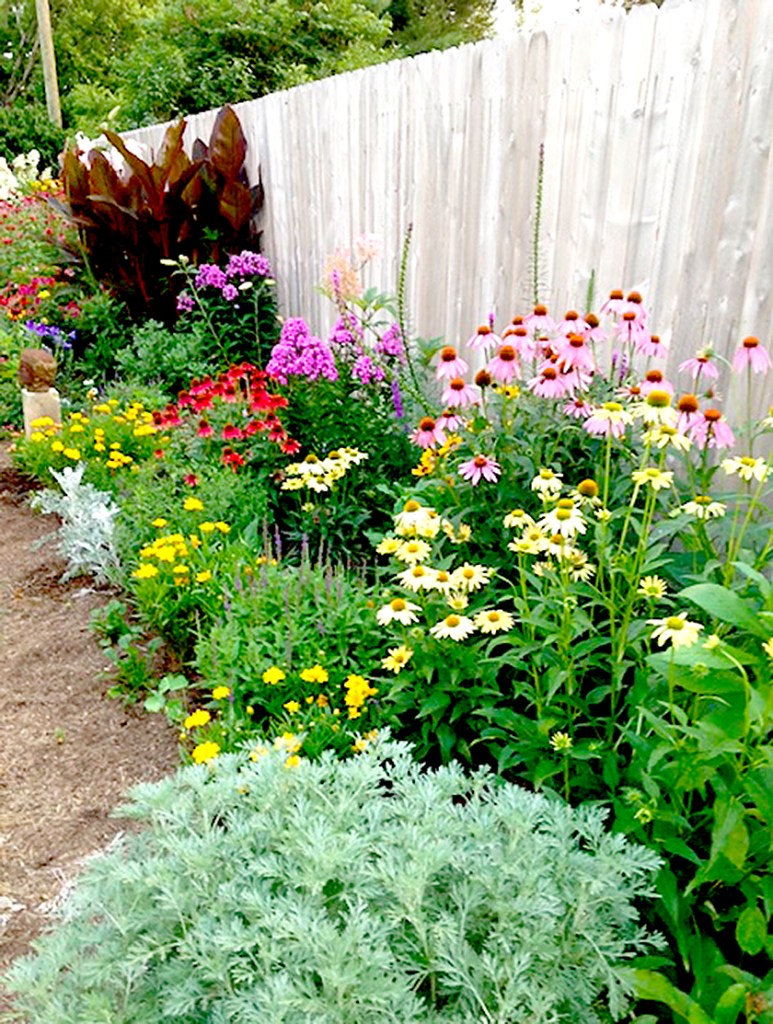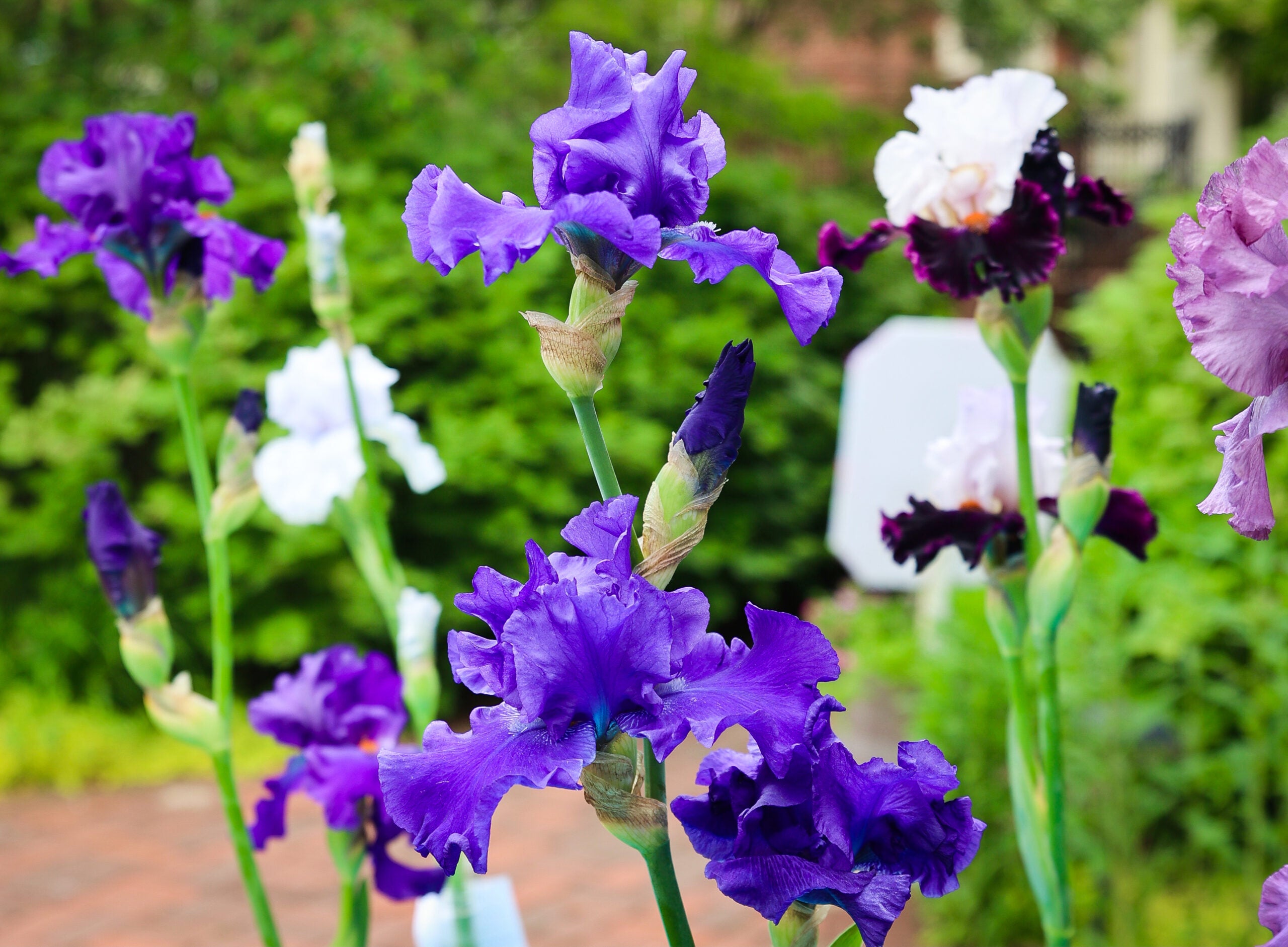By Rosie Doerting, The Garden Club of Frankfort
It’s April! Winter seems to be a time long ago, as dull browns and grays are being replaced by vivid greens in the landscape. Many of you seasoned gardeners automatically kick into gear as you get your beds ready for a new growing season. But, if you are a newbie and need a few tips, I will be happy to pass on some skills I have learned from years of spending time in my flower gardens.
I am not an expert and I have had no formal training in horticulture, but I regularly read articles in plant magazines and online. “Fine Gardening” has useful information, as well as gorgeous photographs. The Franklin County Extension Office has a very useful monthly horticulture newsletter called “Weed It and Reap.” The library has shelves of gardening books for ideas.
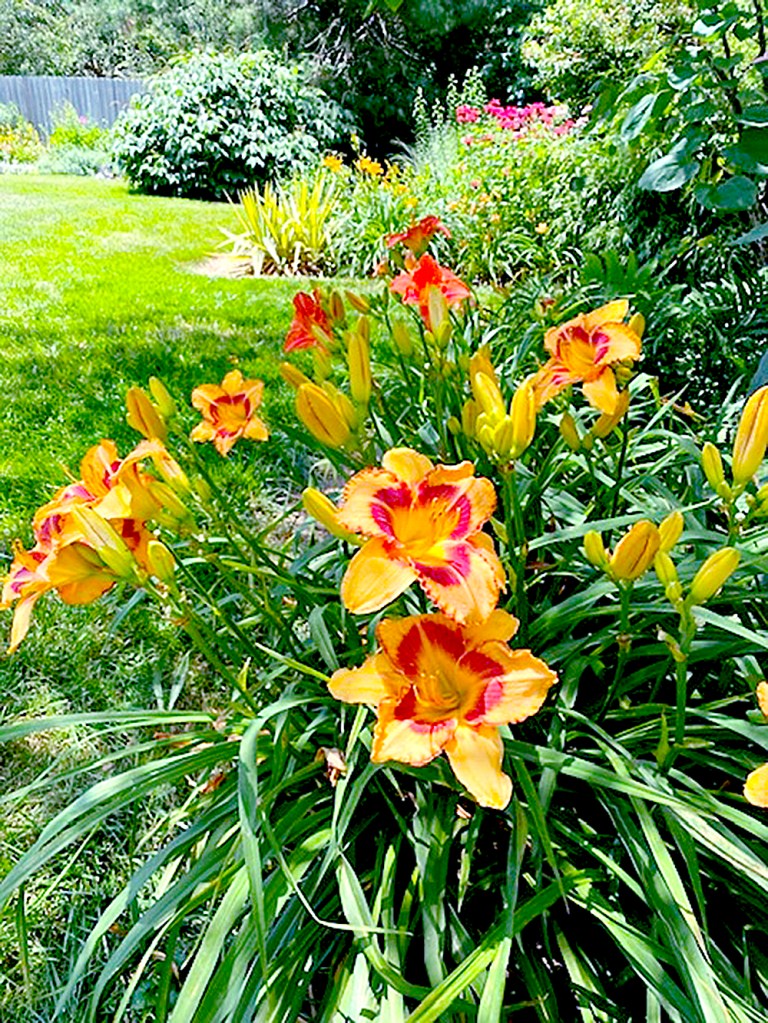
Day lilies are one of Rosie’s favorite flowers, with approximately 40 different sizes, shapes and blooms in July. Most of the plants in her current garden are from divisions she brought from her former home in Bridgeport 13 years ago. (Photo by Rosie Doerting)
I have a habit of walking along the edge of my flower beds all year, even in the winter. It helps me keep an eye on things and I can notice early when something is awry. In the spring, it is vital to be a regular observer in the garden and catch any problems. You can get a head start on those pesky weeds before they get too established. Walk with your gloves, a weeder and bucket to make the job more efficient. Digging the weeds can give you a sense of doing something productive early in the month and help have your beds ready when it’s time to plant.
Tidy up your flower beds in April. Leaving the leaf litter in February and March can help useful insects and wildlife survive because they need that important protection from winter winds and late snows. But you can begin to clean that off in April. Be gentle. You will be happy to be working, but the plants are still fragile. I have a narrow 8-inch rake that is handy to use when cleaning between plants. You may need to just grab leaves by the handfuls if it’s a small space. Trim off dead or ragged plant leaves.
As you remove leaves and debris, look for weeds. When removing weeds, try to dig out with a narrow weeding tool so you can get the whole root. Just pulling a weed can leave roots that will be quite happy to send up more weedy shoots for you later. Not sure if it’s a weed or a new plant? Leave it for awhile until you can identify the leaf easier.
Check your perennial plant crowns for slugs or snails or any type of problem. Catching issues early can save your plants before they are too far ruined to survive.
Now that your flowerbeds are tidy and clean, aerate the soil. Use a hand cultivator, for small areas or there are cultivators with longer handles for larger areas. A garden rake (not a leaf rake) pulled back and forth can work the soil, too. The main thing is to turn the soil over so air can get inside the dirt that has been compacted during the winter months. Work gently when you are close to established plants so you don’t damage roots.
Add some compost to this newly turned earth and work it into the soil. Your existing plants will be so thankful you are feeding them and any new plants you plant will have a better chance to thrive.
Perennials are often pushed up in winter due to frost heave. Freezing and thawing can cause soil to move and can shove plants up out of soil. Gently push these plants back into the soil where they should be, so the roots are back under the soil.
Last step for your beds is mulch. You can add to existing mulch or fill in with all new. Mulch is vital for weed control and retaining soil moisture. Mulch is also the finishing touch for a neat and tidy flowerbed.
If you have pansies that overwintered in flowerpots or beds over the winter, you may want to remove these flowers now. They have worked hard all winter and they can now be dug out and discarded. They do not like hot weather and even May can be too hot for them. While you are working in your flowerpots, go on and clean those. You can remove all potting soil and buy new, or mix some new soil in with the used soil. Wipe down your pots, clean off any algae or discolorations on the pots so they look fresh and inviting for your new plants.

The Doertings’ perennial borders have something blooming from early spring to frost. The profusion of flowers surround the backyard on three sides and other landscaping includes a shady alcove of trees and bushes and more beds surrounding their brick home. (Photo by Rosie Doerting)
Those leaves from the daffodils and tulips that bloomed early? Leave them alone. Do not trim them. Do not tie them up. Just let them absorb all of the sun and moisture they can to build nutrients in the bulbs for next year’s blooms. The old foilage will disappear by June.
Garden centers and stores have been filling up with brightly colored flowers, temping us with fresh spring blooms. Go on and buy them if you want, but do not plant them until all chance of frost is past. Keeping them in the pots allows you to take them into a safe covered place if there is a late frost.
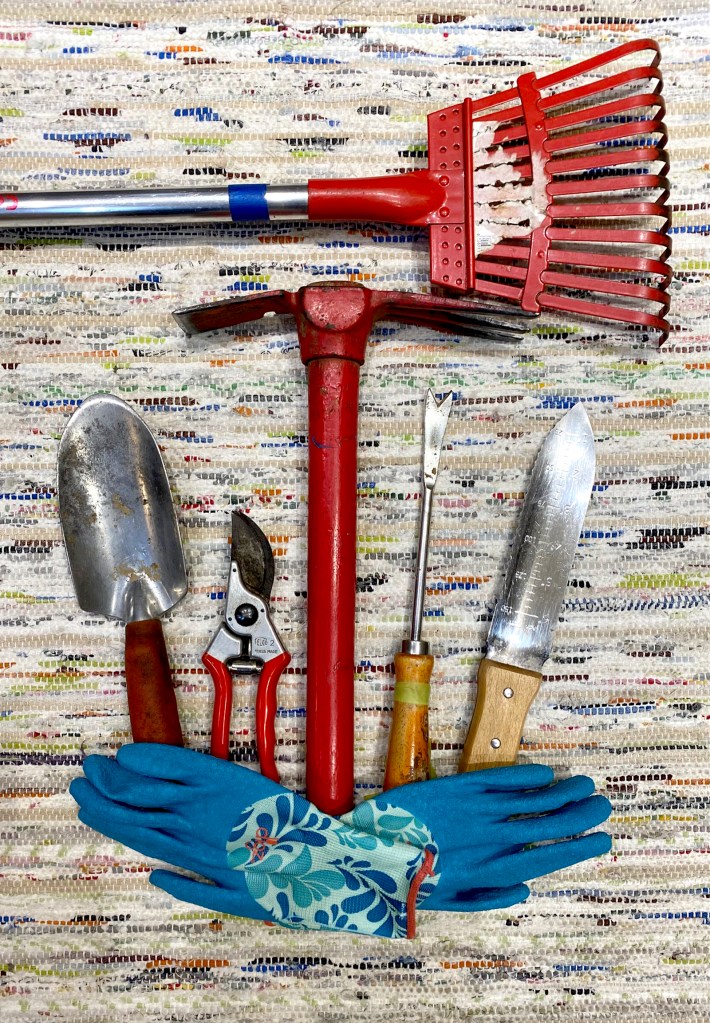
Derby Day was the standard safe date for Central Kentucky gardeners for years. However, due to climate change, these old norms are not always the standard now. Watch your local weather forecasts for the last chance of frost. Once that frost date has passed, you can plant without worrying about cold weather harming your new blooms.
Treat your new plants to a boost of time-release fertilizer, such as Osmecote. Following manufacturer’s instructions, sprinkle some in the soil when you plant the new plants and they will receive the benefits all season. For established flowering plants, use a fertilizer for blooms, like Bloom Booster. Follow instructions and feed your flowers several times during the growing season for happier blooms.
One suggestion is to keep a garden journal. It can be as simple or as detailed as you want. I did keep a journal, but a few years ago, I decided I took enough photos on my phone, that I did not need a written journal. I realized last fall that all of those photos do not give me the information I depended upon. I did not know last year’s rainfall or temperatures.
I did not know when a plant died or another thrived. I did not remember where I purchased a specific plant. My old journals told me these and other details that helped me the next year. I am going back to a simple journal, writing in it several times a week, not necessarily daily, just to give me better information about my continuing journey with the flower beds.
Gardening is a wonderful hobby. If it stresses you, cut back. Don’t fret about a few weeds. Make your plant area smaller, or just garden in pots. Your garden space should be a soothing, happy place where you can enjoy some of nature’s prettiest living organisms.
Now, get out there and get your hands dirty!
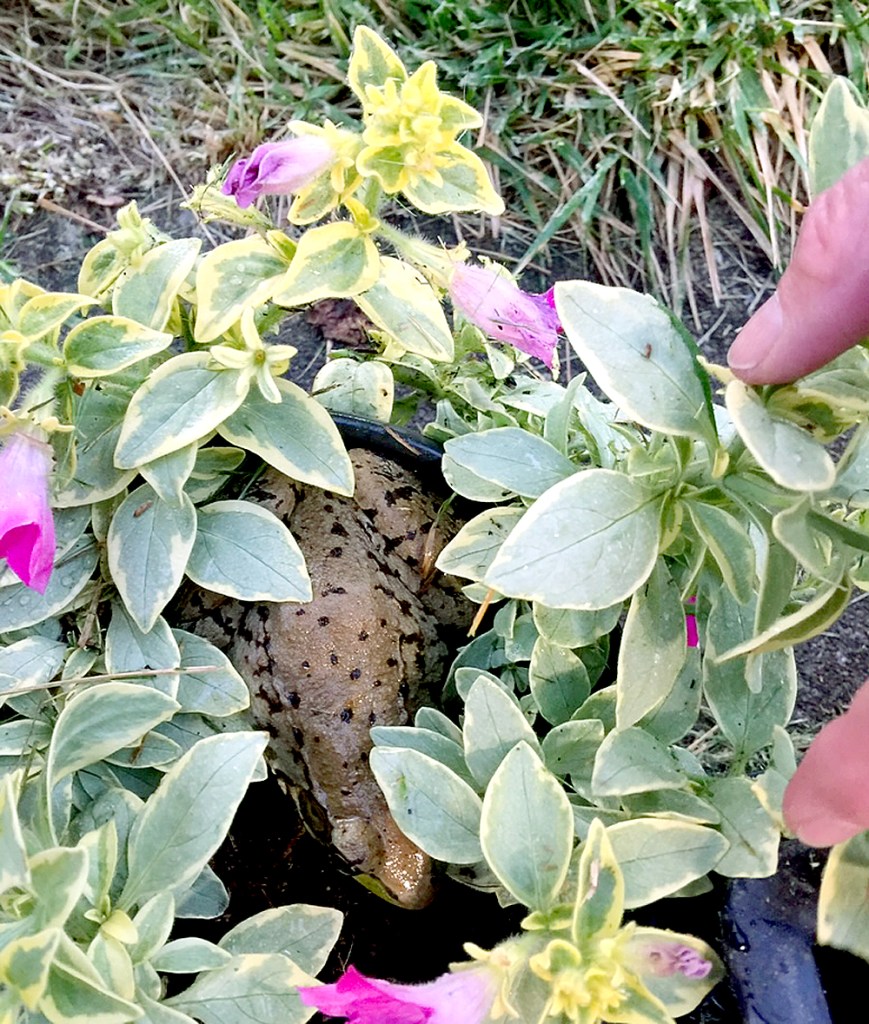
A shy toad hides under an Aptenia cordifolia “Mezoo.” When Rosie comes across toads or turtles among her flowers, she leaves them there and they will eat harmful bugs. (Photo by Rosie Doerting)
